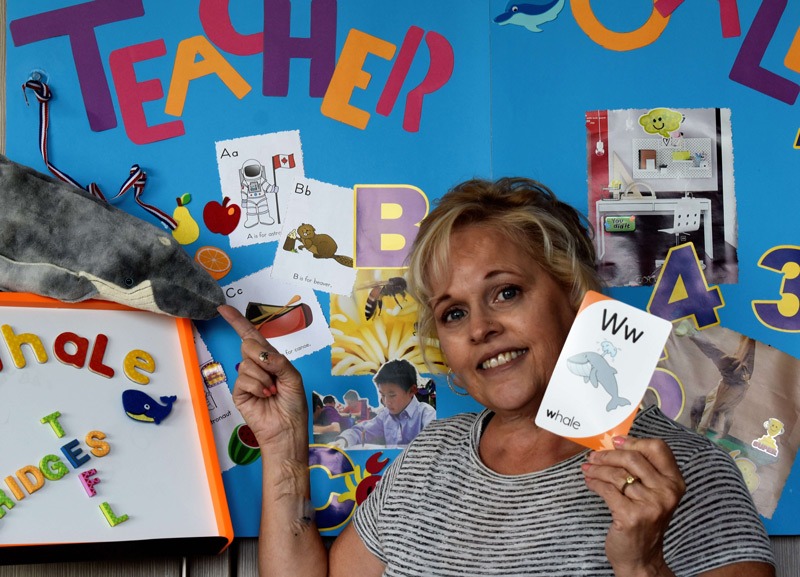Do you feel lost when it comes to how to teach English grammar in the ESL classroom? Maybe you think that you’re not qualified to teach it or that you don’t fully understand specific grammatical structures. Lucky for you, you don’t need perfect grammar to teach English grammar — you just need the following tips and strategies!
I’m terrible at grammar. Can I teach English?
Truthfully, if you’re reading this article and understand it, you are not terrible at English grammar. Grammar, in the sense that most linguists use the term, is simply the structure of a language. Even while reading this sentence, you’re using grammar!
TEFL/TESOL teachers have all different backgrounds and experience levels. Frankly, not feeling confident with grammar is a problem that many people run into in their daily lives as a professional in most industries — there’s a reason why proofreading software is so popular!
For native speakers, they often have a “feeling” about something being grammatically right or wrong in grammar, but they don’t know where this comes from. This is because most native speakers are not explicitly taught English grammar but automatically know the grammar because they grew up speaking the language. This means that you know which of the two sentences below is correct without being able to explain exactly why:
I’m go home now.
I’m going home now.
Problems with grammar can be present for non-native speakers as well, especially if you picked up your English on the job or through informal training.
Then, take into account vernacular variations in English and regional differences, as well as social changes that affect the language, and you’ll see that sometimes answers to grammatical questions aren’t black and white, but complex and evolving. Grammar is not a rigid list of rules that you have to memorize in its entirety, so you can relax if you don’t know every single term and structure — you just need the basics!
Here are some ESL grammar activities you can use in your own classroom!

How much English grammar do I need to know before I start teaching?
When it comes to how to teach English grammar, you can lean on your basic education in English for most things and brush up on concepts when you need them, but it’s a good idea to get the fundamentals as an EFL teacher. To effectively teach most English grammar found in courses for English learners, you should know:
- The basic parts of speech: noun, verb, adjective, adverb, preposition, etc. Here’s a guide on how to teach parts of speech to get you started!
- Verb agreement: Who is doing the action? Matching a verb to the subject in a sentence is the most basic grammar concept there is.
- Verb tenses: Start with the simple present, simple future, and simple past. With those three, you’ll be able to teach the majority of beginner English grammar classes.
Those are the basics to get you started! Eventually, you’ll be able to teach something as complex as participial adjectives, but starting with those basics is a good beginning.
Once you start teaching, you’ll be able to get more specific guidance from colleagues and personal experience. Many teachers start teaching and become English grammar specialists as they move through their EFL careers.
Check out the following clip, from a BridgeUniverse Expert Series webinar, to learn about making grammar lessons more fun. Watch the full video and browse a growing library of webinars here!
What are some ways to improve my grammar before I start teaching?
Professional resources
There are many ways to prepare yourself for teaching English grammar. Here are some ideas:
- Get TEFL certified with a course that includes a grammar refresher, like the 120-Hour Master Certificate. Or, if you’ve already taken a general online TEFL course, take a Specialization in Teaching English Grammar course to ensure that your grammar is up to speed before you begin teaching.
- Ask non-native speakers of English (assuming you are a native speaker) about the English grammar that they found the most difficult. Conversations with people who have already learned English can provide insight into what beginners will find confusing. This will help you learn to teach English grammar. Along these same lines, non-native English-speaking teachers can reflect on which grammar topics were most difficult for them to master.
- It’s not a bad idea to familiarize yourself with resources for teaching grammar, such as WordReference.com, a dictionary that conjugates verbs in every tense, saving you time and effort. Here’s a sample with the verb ‘to be.’
- Use what you learn from another language to improve your English grammar chops. You may be able to learn a new language as a result of teaching in a new country or using online resources. Learning a new language will push you to understand grammar and give you empathy for your students when you do begin teaching.
- Spend time looking into the possible pedagogical aids you may have at your disposal. A simple online search for terms like “English grammar infographic” or “verb agreement visual aid” will turn up a lot of things you can study on your own time. Some people learn best with visual cues, so you could also give these aids to your students.
- Work on your writing with an online tutor. It might be possible to improve your grammar by having someone check over your written communication.

Additional tips
So, you’ve completed your formal training on how to teach English grammar and have amassed a collection of grammar teaching resources — great, but don’t stop there! Let’s take a look at some other simple ways you can continually improve your grammar in your free time each day.
- Read widely. This includes magazines, newspapers, eBooks, etc. You should read publications that are edited as opposed to content on Instagram because this will naturally provide you with a broader vocabulary and more consistent grammar. This is for native as well as non-native English speakers.
- Get historical. Podcasts about grammar abound. They aren’t boring, either! Try looking for ones on the history of English — there are some pretty bizarre grammar structures that came about as a result of historical influences.
- Have a global music palate. If you want to truly understand how English grammar is used around the world and avoid pitfalls like thinking the only way is the way from your own culture/background, listen to global music and see how varied English can be! Remember that it’s important to strike a balance between prescriptive grammar (“These are the rules”) and descriptive usage (“Yeah, that’s technically the rule, but in the South, we sometimes say…”).
- Take online writing and rhetoric courses (not specific to TEFL/TESOL). Many MOOCs are open to the public; for example, Harvard is currently offering one about rhetoric and grammar. You can simply use a search engine to find options that are available for free or very low cost.

What are tips for teaching grammar once I’m a teacher?
- Study up on the grammar point for each class before you teach it. Use online resources, and make a point to create well-oiled lesson plans. You should spend at least 20 minutes planning for every 40 minutes of teaching.
- If a student asks a grammar question you don’t know how to answer, be honest with them. Do not try to make up an explanation on the spot because you’ll most likely make an error and possibly worsen your students’ language skills if they latch on to your bad explanation. Instead, use a formulaic answer promising to go research the question and come back with more information. Use this as an opportunity to mention that there is often no one “right” answer when it comes to complex grammar and to model how to be a curious learner for your students.
- Ask your colleagues and employer for ideas to teach grammar. Chances are that someone in your office or company will be teaching the same thing you are around the same time, or that your colleagues may have taught the grammar point before. Use their experience to your advantage, and don’t assume that their methods won’t work.
- Try using ESL games instead of dryly reading aloud grammar rules. It’s important to make grammar accessible and fun. Grammar does not need to be boring!
- Use pre-planned activities, and personalize them. You can use our ESL grammar lesson plans, or you can find others online. The important thing is to use pre-planned lessons as guides and not as the only possible way to teach. If your class doesn’t go well, change the activities and adjust for the next lesson.
- Use surveys to ask your students about which grammar points they need the most help with. You may be surprised if you ask them their own opinions on the subject. Possibly, you might be covering a particular point quickly because you think they already understand it but discover that, in fact, you’ve been confusing them for weeks. This works for all levels of learners but is especially effective for teens or adult students, as it gives them a sense of autonomy about their learning.
Learn more strategies for teaching English grammar in this article!
You don’t need to have perfect English grammar to teach English. In fact, you will be giving your students a better model of how to be curious about language in general and learn the intricacies of English grammar if you admit that you don’t have perfect grammar yourself! And, using the tips above will help you feel more comfortable and confident when teaching grammar.










